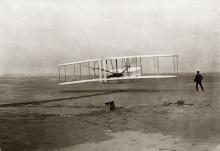In 1939, President Franklin Roosevelt established National Aviation Day, placing it in on the calendar to coincide with the birthday of Orville Wright on August 19. Orville and his brother Wilbur designed and built the Wright Flyer and in 1903 used it to perform “the world’s first controlled powered and sustained heavier-than-air human flight.”
Beyond the Wright brothers, the Ohio Aviation Association points out that Ohio has a rich aviation history – from Neil Armstrong to John Glenn and Warren Grimes to Norman Crabtree and many others.
Today, more than a few Ohioans are still conducting research in various fields related to aviation. In recognition of National Aviation Day, here are just a few of the aviation-related research projects that leveraged the computational resources of the Ohio Supercomputer Center over the last decade:
-
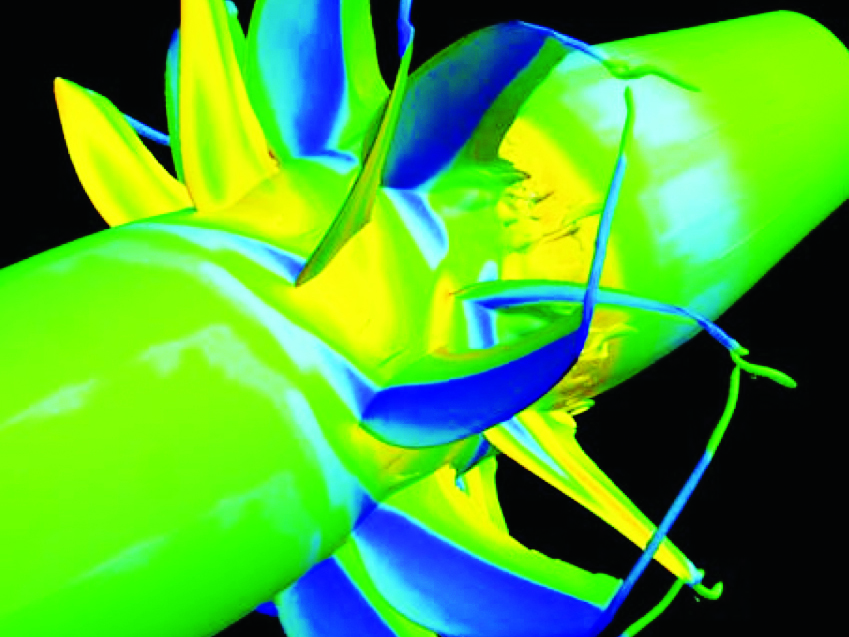 Jen-Ping Chen, Ph.D., associate professor of mechanical and aerospace engineering at The Ohio State University employed numerical simulation to study very complex airflow fields produced within the multiple stages of constantly rotating rotors and stators within turbomachinery. This information allows engineers to achieve the most efficient propulsion and power systems.
Jen-Ping Chen, Ph.D., associate professor of mechanical and aerospace engineering at The Ohio State University employed numerical simulation to study very complex airflow fields produced within the multiple stages of constantly rotating rotors and stators within turbomachinery. This information allows engineers to achieve the most efficient propulsion and power systems. - Datta Gaitonde, Ph.D., a professor of mechanical and aerospace engineering at Ohio
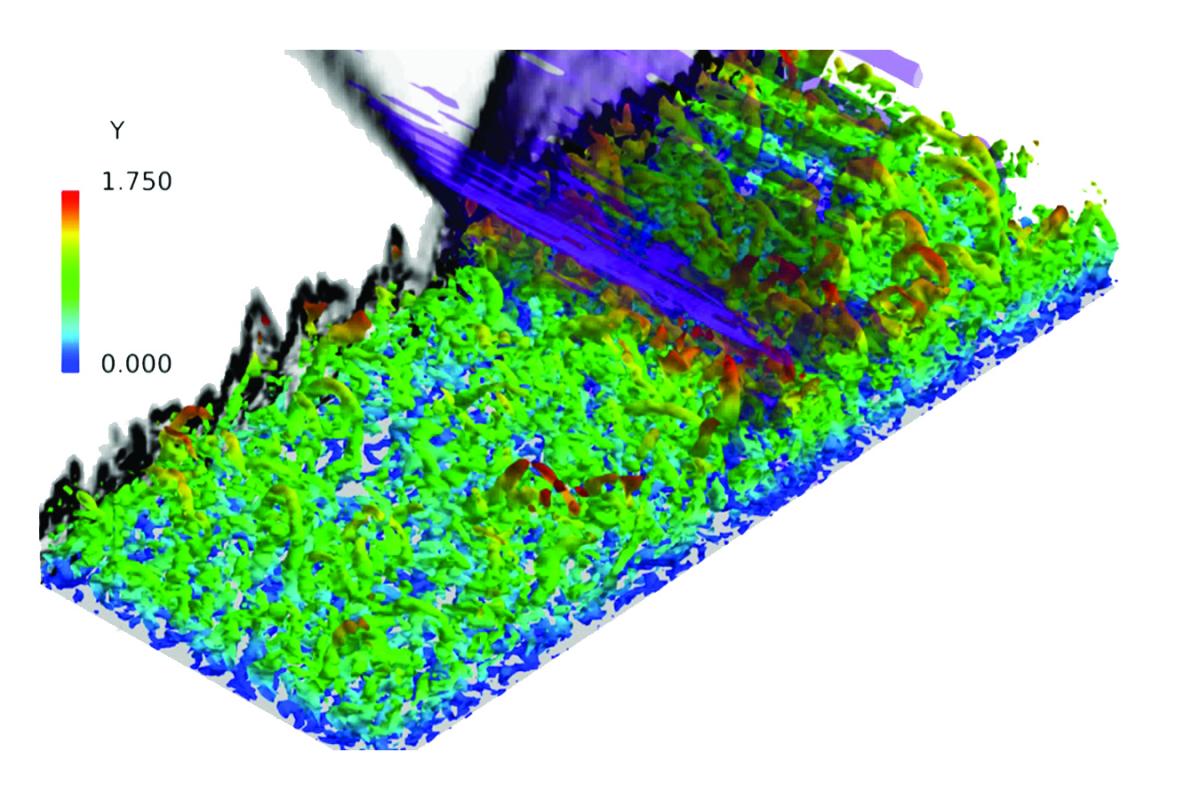 State, examined ways to control unsteadiness caused by the interactions between shock waves from supersonic aerospace vehicles and the airflow immediately adjacent to their exterior surfaces. This phenomenon, referred to as shock boundary layer interaction, can have significant effects on the design and performance of wings, control surfaces and propulsion systems.
State, examined ways to control unsteadiness caused by the interactions between shock waves from supersonic aerospace vehicles and the airflow immediately adjacent to their exterior surfaces. This phenomenon, referred to as shock boundary layer interaction, can have significant effects on the design and performance of wings, control surfaces and propulsion systems. - A University of Akron researcher designed computer prediction models to test potential new docking seals
 that could better preserve breathable cabin air for astronauts living aboard the International Space Station and other NASA spacecraft. Nicholas Garafolo, Ph.D., a research assistant professor in Akron’s College of Engineering simulated air leakage through a two-piece elastic silicone – or elastomer – seal.
that could better preserve breathable cabin air for astronauts living aboard the International Space Station and other NASA spacecraft. Nicholas Garafolo, Ph.D., a research assistant professor in Akron’s College of Engineering simulated air leakage through a two-piece elastic silicone – or elastomer – seal.
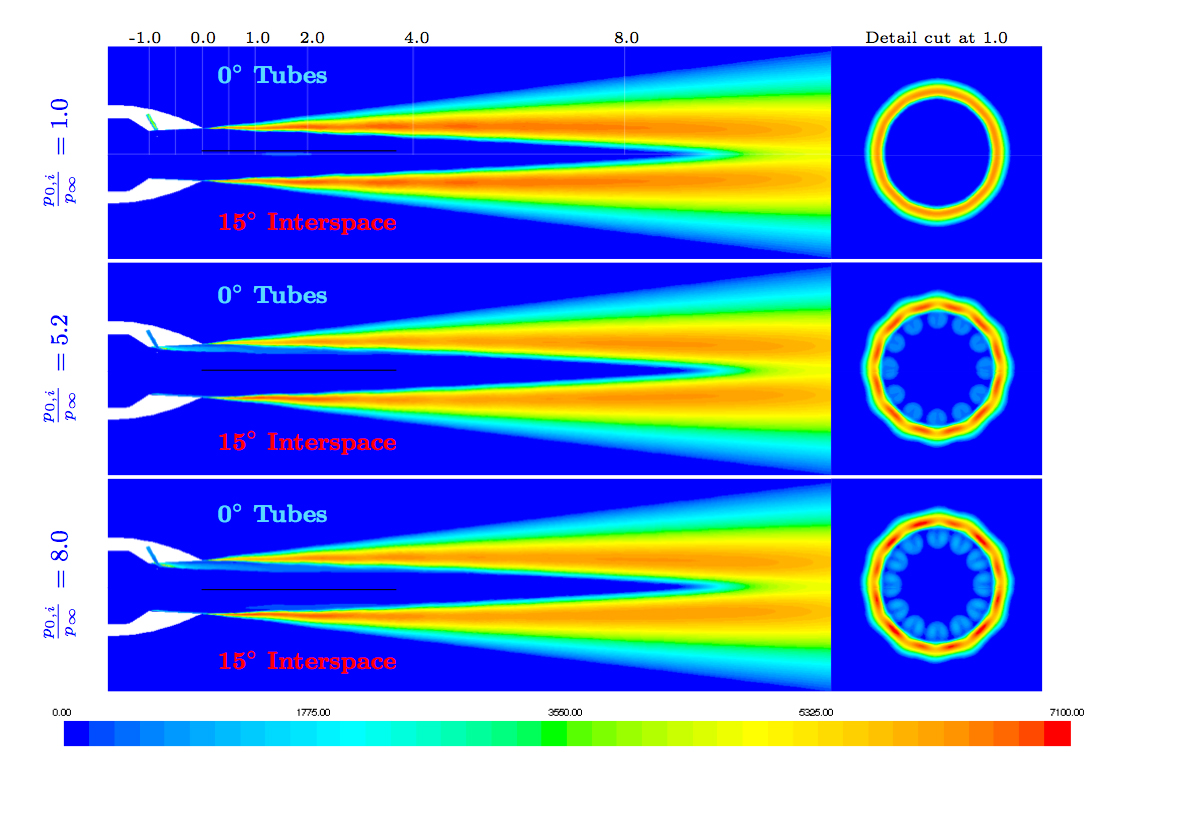 The roar of jet engines is the major source of noise created by commercial and military aircraft, which are bound by numerous stringent noise regulations. A research team led by Ephraim Gutmark, Ph.D., D.Sc., at the University of Cincinnati, leveraged both experimental and computational tools to optimize existing aircraft noise suppression techniques and to develop new ones.
The roar of jet engines is the major source of noise created by commercial and military aircraft, which are bound by numerous stringent noise regulations. A research team led by Ephraim Gutmark, Ph.D., D.Sc., at the University of Cincinnati, leveraged both experimental and computational tools to optimize existing aircraft noise suppression techniques and to develop new ones.
- Certain aircraft features, such as landing gears and weapon bays, produce pressure
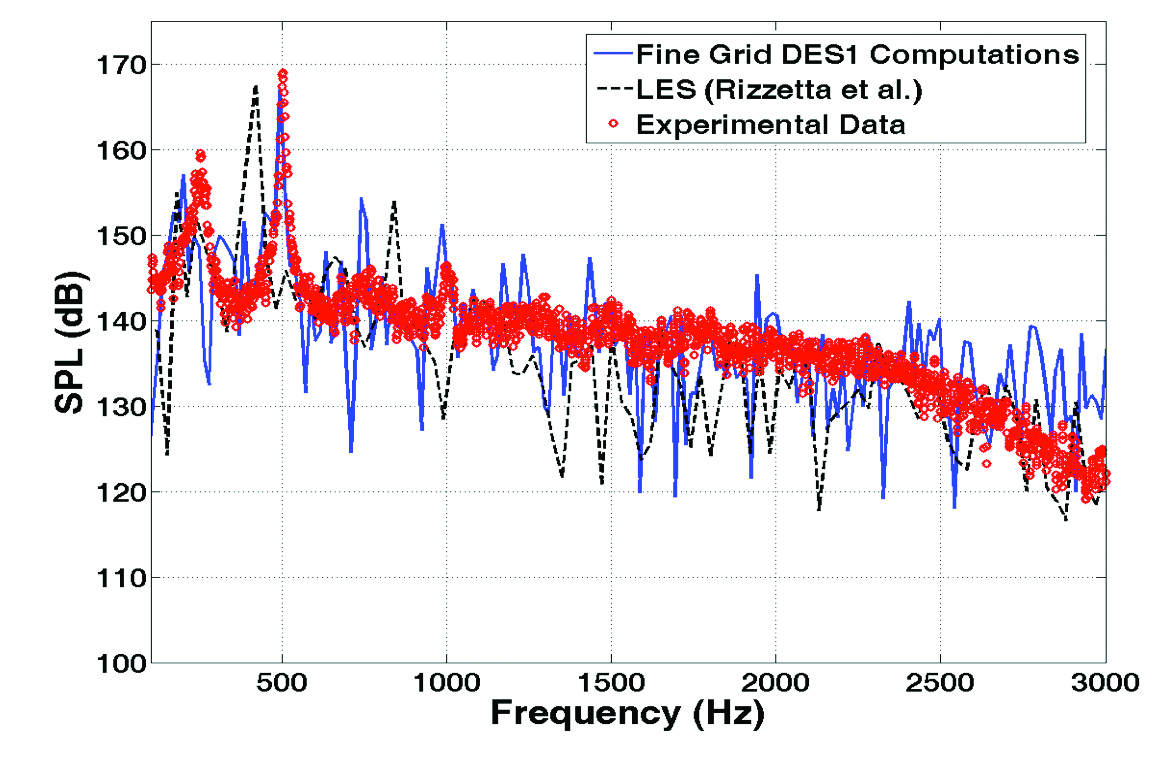 fluctuations that reach unacceptable levels for aircraft operation and safety at transonic speeds. To better understand how to control the airflow for pressure fluctuations and noise reduction, Awatef Hamed, Ph.D., Bradley Jones Professor and department head of Aerospace Engineering and Engineering Mechanics at the University of Cincinnati, conducted high-fidelity simulations to assess the fidelity of certain models.
fluctuations that reach unacceptable levels for aircraft operation and safety at transonic speeds. To better understand how to control the airflow for pressure fluctuations and noise reduction, Awatef Hamed, Ph.D., Bradley Jones Professor and department head of Aerospace Engineering and Engineering Mechanics at the University of Cincinnati, conducted high-fidelity simulations to assess the fidelity of certain models.
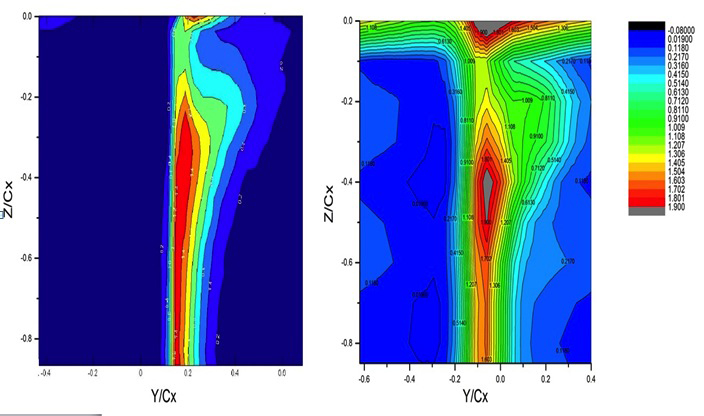 A research team led by Mounir Ibrahim, Ph.D., chair and professor of mechanical engineering at Cleveland State University, in collaboration with Ralph Volino, Ph.D., a professor of mechanical engineering at the U.S. Naval Academy, investigated the endwall flow in a turbine passage. This flow involves a complex system of vortices that interact with each other and produce undesirable effects, including the disruption of cooling flows and the generation of aerodynamic losses.
A research team led by Mounir Ibrahim, Ph.D., chair and professor of mechanical engineering at Cleveland State University, in collaboration with Ralph Volino, Ph.D., a professor of mechanical engineering at the U.S. Naval Academy, investigated the endwall flow in a turbine passage. This flow involves a complex system of vortices that interact with each other and produce undesirable effects, including the disruption of cooling flows and the generation of aerodynamic losses.
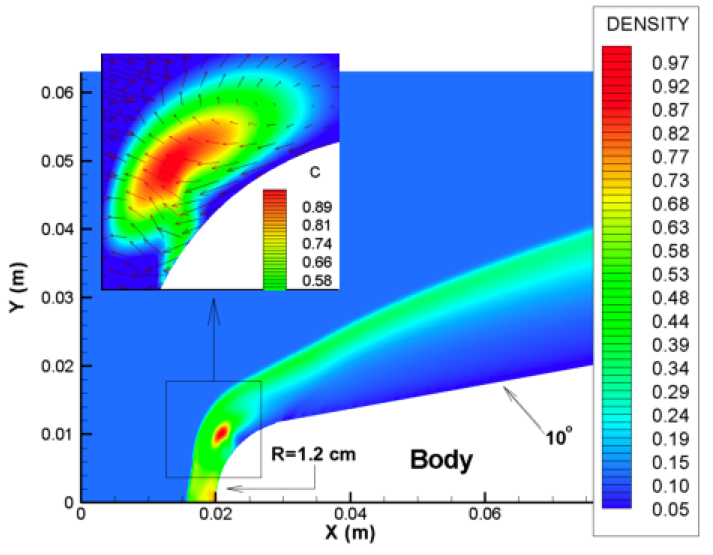 Scientists are developing hypersonic aircraft that can travel at speeds beyond Mach 5 (3,800 mph). A research group led by Alex Povitsky, Ph.D., an associate professor of mechanical engineering at The University of Akron developed a computational methodology for simulating carbon shields that protect the aircraft from shock waves and heat stresses by slowly burning away – a process called ablation.
Scientists are developing hypersonic aircraft that can travel at speeds beyond Mach 5 (3,800 mph). A research group led by Alex Povitsky, Ph.D., an associate professor of mechanical engineering at The University of Akron developed a computational methodology for simulating carbon shields that protect the aircraft from shock waves and heat stresses by slowly burning away – a process called ablation.
These are but a small sampling of the variety of aeronautical and astronautical research being done on OSC systems, yet they are more than sufficient to illustrate that the Buckeye State continues to stake a strong claim as a leader in flight innovation.
You now can explore the Wright Flyer in amazingly intricate three-dimensional detail through renderings recently made available through the Digitization Program Office of the Smithsonian Institute.
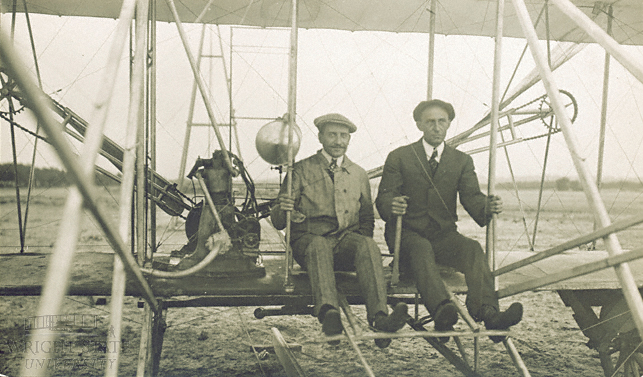
The Wright Brothers took a very scientific approach to designing and building their planes. They began by searching the literature for the latest views on aeronautics. They corresponded with colleagues about their ideas. They tested hundreds of parts and unpowered and powered full-scale models, both in natural environments and in a wind tunnel they created. They worked to develop piloting skills and developed various propulsion systems.
And, after they completed their historic flight in 1903, they continued using these processes to refine and produce experimental and production airplanes.
Congratulations to the long line of aviation pioneers from Ohio, and happy birthday wishes to Wilbur Wright!

